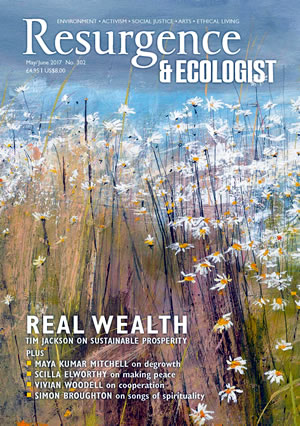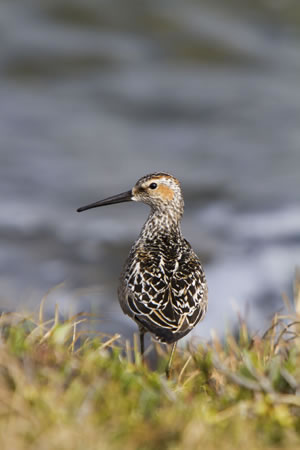The Brooks Range of northern Alaska is not an icy place. The few visitors, often misled by postcard views from Southeast Alaska and the Alaska Range, are surprised to find these Arctic mountains largely unglaciated. There are only a handful of glaciers in the Brooks Range, most of which are found in the Arctic National Wildlife Refuge. These alpine glaciers flow from the highest peaks but manage only a few thousand feet before petering out in a chaos of jumbled moraines and meltwater.
Those few small glaciers, a seemingly insubstantial part of that vast range of mountains, have a disproportionate impact on the Arctic environment. Some 50 miles to the north, the rivers that begin with the remnant ice arrive at the grey ocean. There, the glacial water and sediment provide a unique and rich substrate for the birds of the coast.
Arctic shorebirds are most abundant on the river deltas close to the coast, where they breed on the tundra and stage for migration in the estuaries. Tens of thousands of shorebirds depend on these river deltas at one time of year or another. Some years ago, biologists noted that certain rivers supported more birds than others, but it wasn’t until a team of multidisciplinary researchers tackled the glacial river systems that they worked out why.
Two groups of invertebrates are common on the coastal mudflats: the Oligochaeta (a class of annelid worms) and the Chironomidae (midges). The life histories of these two classes of critters require that they spend multiple years in mudflat habitats. Midges, for example, spend at least three years in the mud before pupating and growing to adulthood. That multi-year life cycle means they are less ephemeral and therefore a consistent food source for birds. And here’s the thing: those midges and worms are far more abundant on the deltas of glacially fed rivers.
Though the exact mechanics are still a mystery, the reason for their abundance likely has to do with the sediment load, sediment structure and reliable freshwater runoff of the glacial outflows. But what it means is that the shorebirds fare better when they forage on the glacially influenced deltas. The birds know it too, and select the reliable habitat of the glacial deltas more often than that of non-glacial ones.
This relationship has a depressing subtext: Brooks Range glaciers are melting at such a rapid rate that they are going to be completely gone in less than 50 years. As the glaciers disappear, what happens down on the deltas? Presumably the invertebrate populations will eventually be reduced to levels similar to those found on non-glacial rivers. Which means a huge decline in the overall availability of food for breeding and migrating shorebirds. How the birds will cope with that is another question entirely.







